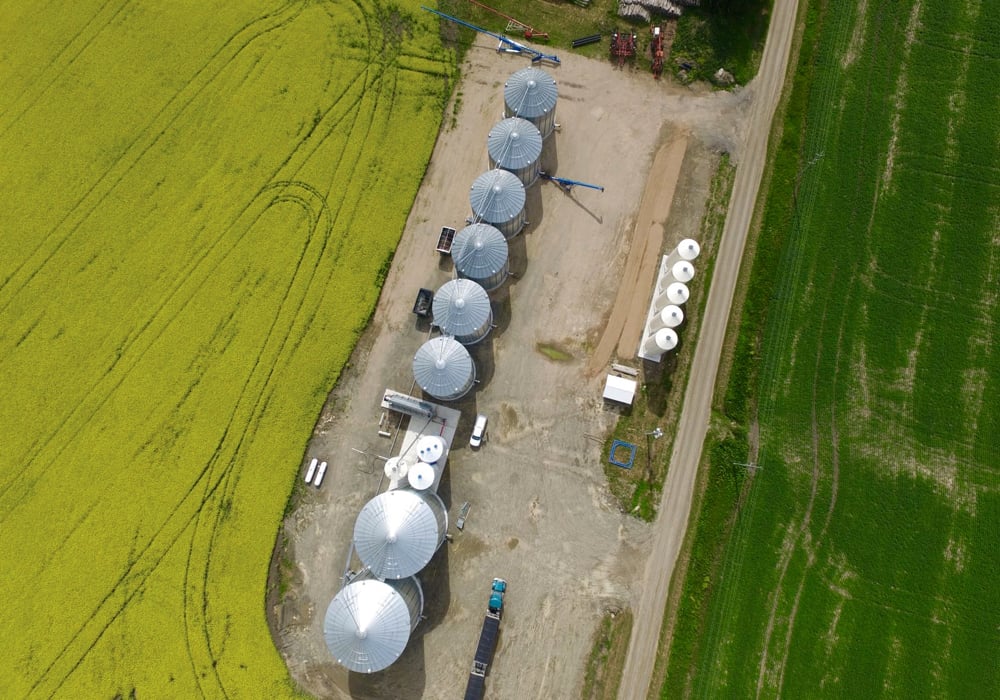We got here with our eyes wide open. Corn prices have been in a decline since August of 2012 when futures topped out at $8.49 per bushel.
Now of course, we are all ready for the ride back up, and the question is how long this will take, and will corn prices in 2015 climb to much higher levels?
Those were heady days in August of 2012, and not only did farmers like growing corn at those price levels in Eastern Canada, but in the rest of the world too.
Read Also

The wildly adaptable side of next gen agriculture
Some people just fall into the world of agriculture — and consider themselves lucky to have stumbled into such a…
We might look back at those prices now as an aberration. For years, when corn got over $4 a bushel in Ontario, it was time for celebration, and when prices reached over $5 and $6 very briefly, egged on by a lower Canadian dollar, it felt even better.
However, when cash values reached just under $8 for corn off the combine in the fall of 2012, it was a fantasy world.
With more acres, and more technology, there’s more corn. Prices have come back to reality, and the USDA is projecting an average price of $3.50 for the 2014 crop.
In its November report, the USDA pegged 2014 production south of the border at a record 14.4 billion bushels, based on an average 173.4 bushels per acre. Corn ending stocks for this crop year are projected at a very onerous 2.008 billion bushels, which is likely to weigh on the corn market far into 2015.
Corn did rally from its October low, but however welcome that is, supply will surely pressure new crop into 2015.
There are several questions that farmers may consider. What range of prices should we expect this year, and will we be able to market our crop profitably? Also, which USDA market reports will affect old-crop and new-crop corn over the 2015 farm planning horizon?
As well, how will specific basis factors impact our marketing decisions?
Of course, there is another question too. Where is the Canadian dollar going, and how may that affect prices for the coming year?
What is particularly encouraging for Canadian corn producers is the demand curve as we head into 2015. The bears have certainly been winning the day in terms of corn price because of supply, but demand is extremely strong. In particular, the November USDA report projected total corn demand at 13.660 billion bushels, a record, with the two biggest components of this demand being feed at 5.375 billion bushels and ethanol at 5.150 billion bushels.
It took record production this year to grow ending stocks to feed that demand. Any hint that 2015’s crop will fall short of those record yields, coupled with a probable drop in corn acres, will likely raise prices, especially if demand continues to increase, although we must keep in mind that lower prices over the last 14 months have certainly helped sustain that demand.
The road ahead for prices for 2015 and beyond may have a lot to do with weather as always. Also important however, will be the acres planted in the spring. In 2014, 90.9 million acres of corn were planted, with a preliminary 83.1 million acres harvested.
This was a decline in acres from the previous two years, but it still resulted in record output. With the lower prices projected in the United States for 2015, and with some areas of the northern plains having poor basis values, it’s entirely realistic to expect lower U.S. corn acres planted and harvested in 2015. This may hold the key to future corn price direction.
Clues to these acreage and yield questions will come from USDA reports in 2015. The major reports are the January final report, which documents the final crop yields for 2014, the March 30 report, which gives USDA’s first acreage estimates, and the June 30 reports on actual planted acres.
In many ways, these USDA reports serve as flashpoints in the market. Typically, there are large movements in price on those days, and hedging in front and behind of these reports needs to be given wide consideration among grain growers. The January report usually is very important to the previous crop year, and the June 30 report is critical for new crop acres.
Of course, the futures market is very important for any Canadian farmer considering planting corn in 2015. However, an appreciation for cash basis values in the corn market is very important to realizing price gains.
The U.S. replacement price in Ontario is always the litmus test for Ontario corn pricing. As the price of corn reaches toward U.S. replacement value, American corn is usually imported, keeping Ontario’s price capped.
For the last few years, Ontario has produced more corn than it could use, moving us to an import basis. However, in 2014 corn was imported starting in July.
Producers need to consider if and when imports might begin every year. The picture here is highly dependent on the supply of old-crop corn in Ontario as well as U.S. basis values across the border. The Canadian dollar also is part of the mix, and converting into U.S. dollars is a daily exercise considering the value of corn on both sides of the border.
Of course, risk comes in many forms and in 2015 eastern Canadian farmers will be making that choice between corn and soybeans. Corn has a much higher cost of production, and this may factor into many planning decisions. On the other hand, corn yields have been growing faster than soybeans.
Sometimes, too, we just plant hoping that prices will rise. It would be dishonest to say we’ve never done that before. But if you do, keep those eyes open wide.















